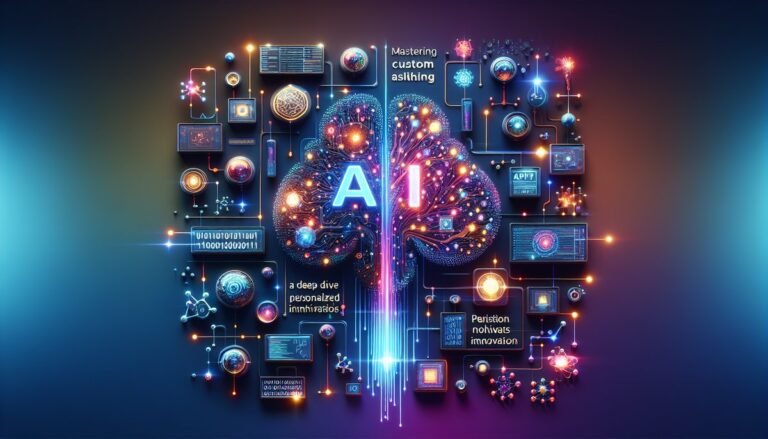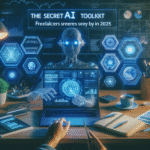The swift advance of Artificial Intelligence technologies has propelled us into a new era of innovation and efficiency. However, as AI becomes more pervasive in our daily lives, a shadow of uncertainty looms over the employment landscape. This rapid technological progression prompts an urgent question: how do we balance the benefits of AI with its potential to displace human jobs? As the debate intensifies, there is a growing chorus for an official body to oversee the social ramifications of this evolving technology. The call for a governmental watchdog to monitor job losses due to AI is gaining traction, highlighting the need for proactive measures to safeguard employment.
Understanding the Impact of AI on Employment
AI’s influence on the job market is multifaceted, affecting industries across the spectrum—from manufacturing and transport to finance and healthcare. While some sectors experience a surge in productivity and innovation, others face the threat of redundancy. The automation of routine tasks has already led to significant workforce reductions in areas like factory work and data entry. Yet, the ripple effects extend beyond these sectors, as AI-driven tools continue to expand into more complex roles traditionally held by humans. As AI capabilities grow, so too does its potential to disrupt traditional job structures, necessitating a closer examination of its long-term implications.
The Role of a Government Watchdog
Establishing a governmental watchdog dedicated to monitoring AI-induced job losses could serve as a critical step toward mitigating these challenges. Such an entity would not only track employment trends affected by AI but also provide valuable insights into the shifting dynamics of the labor market. By analyzing data and trends, the watchdog could offer recommendations for policy adjustments and workforce retraining programs, ensuring that workers have the necessary skills to transition into new roles. Furthermore, this oversight could help balance economic growth with social welfare, ensuring that the benefits of AI are widely distributed rather than concentrated in select sectors or regions.
Lessons from History: Automation and Employment
History provides valuable lessons on the interplay between technological advancement and employment. The Industrial Revolution, for instance, brought about significant shifts in labor dynamics, with many jobs rendered obsolete by mechanization. Yet, it also spurred the creation of new industries and job opportunities. Similarly, the advent of computers and the internet transformed the workplace, initially causing job displacement but ultimately leading to a net increase in employment as new sectors emerged. By learning from these historical precedents, a governmental watchdog can help navigate the current AI-driven transition, fostering a balanced approach that encourages innovation while protecting workers.
Looking Ahead: Preparing for the Future
As we move forward, it is imperative that governments, businesses, and individuals collaborate to address the challenges posed by AI in the workforce. The establishment of a dedicated watchdog represents a proactive approach to understanding and managing these changes. By fostering dialogue among stakeholders and implementing strategic policies, we can ensure that AI’s impact on employment is both positive and equitable. This forward-thinking approach not only safeguards current jobs but also paves the way for future opportunities, enabling society to harness the full potential of AI while minimizing its disruptive effects.
Understanding the Call for a Government Watchdog
The rapid integration of Artificial Intelligence into various industries has sparked a significant debate about its impact on employment. As AI technologies advance, the potential for automation to replace human workers grows, leading to increased concerns about job security across multiple sectors. This has prompted calls for the establishment of a government watchdog to monitor job losses attributed to AI, ensuring that the transition to a more automated workforce does not disproportionately affect vulnerable populations. The overarching goal is to create a balanced approach that harnesses the benefits of AI while mitigating its potential negative impacts on employment.
The Role of a Watchdog in Navigating AI-Induced Job Displacements
A government watchdog could serve as a crucial mechanism in monitoring and managing the effects of AI on the job market. By systematically analyzing employment trends and identifying industries most at risk, such an entity would provide valuable data to inform policy decisions. This proactive stance could help in crafting targeted interventions that support workers in transitioning to new roles or industries.
For instance, the watchdog might identify sectors such as manufacturing or logistics, where automation has already begun to make significant inroads. By examining these areas, the watchdog can anticipate future trends and prepare workers through retraining programs or educational initiatives aimed at equipping them with skills relevant to the evolving job market.
Learning from Historical Precedents
Historically, technological advancements have always led to shifts in the workforce. The Industrial Revolution, for example, saw the rise of mechanized production, which initially displaced many workers but eventually led to the creation of new industries and job opportunities. A modern-day watchdog could draw lessons from such historical precedents, applying them to today’s context of AI-driven change.
The introduction of automated teller machines (ATMs) offers a more contemporary example. Initially feared as a threat to bank teller jobs, ATMs actually led to a shift in the role of tellers, who began focusing more on customer service and sales, ultimately enhancing the quality of banking services. A similar transformative potential exists with AI, provided that there is a concerted effort to manage the transition effectively.
Potential Challenges and Considerations
While the establishment of a watchdog seems prudent, it is not without its challenges. One significant concern is the pace at which AI technology evolves, potentially outstripping the ability of regulatory frameworks to keep up. This rapid development cycle necessitates a flexible and adaptive approach to regulation, allowing for swift responses to new technological advancements.
Moreover, there is a need to ensure that the watchdog operates with a clear mandate and sufficient resources. It should be empowered to conduct comprehensive research and collaborate with industry leaders, educational institutions, and other stakeholders to develop effective strategies. Transparency and public engagement are also vital, as they can foster trust and cooperation from the industries and workers affected by AI-induced changes.
Envisioning a Balanced Future with AI
Ultimately, the goal of setting up a government watchdog is to strike a balance between embracing the potential of AI and protecting the workforce from its disruptions. This involves not only monitoring job losses but also fostering job creation in emerging fields that AI technology generates. By supporting innovation and ensuring fair employment practices, a watchdog can help guide society through the complexities of AI adoption.
Consider the hypothetical scenario of AI-driven healthcare innovations. While AI might automate specific diagnostic tasks, it also opens up new roles in telemedicine, patient care, and health data management. A well-functioning watchdog could facilitate this transition by promoting policies that encourage workforce development in these new areas, ensuring that the benefits of AI are shared broadly across society.
Conclusion: A Call to Action
The call for a government watchdog to monitor AI-induced job losses underscores the need for a thoughtful approach to technological evolution. As AI continues to reshape the landscape of work, proactive measures are essential to safeguard employment, promote equity, and capitalize on the transformative potential of AI. By learning from the past, addressing current challenges, and planning for the future, society can navigate the AI revolution with confidence and optimism.
Establishing such a watchdog would not only provide oversight and guidance but also affirm a commitment to a fair and just transition, ensuring that as AI progresses, the workforce is not left behind. The journey forward requires collaboration, innovation, and a shared vision for a future where technology and human effort coexist harmoniously.
Navigating the AI Revolution: Monitoring Job Markets and Embracing Opportunities
As Artificial Intelligence continues to reshape industries, the call for a government watchdog to monitor job losses presents a pivotal moment. This crucial intervention aims to address concerns about employment displacement while encouraging a balanced transition into a future where technology complements human effort. By instituting a dedicated body to oversee AI’s impact, we can better manage the workforce’s adaptation, ensuring that economic shifts do not leave workers behind.
Looking forward, it is vital to recognize that the potential of AI extends beyond traditional technological spheres. By fostering an environment that encourages innovation, governments and industries can unlock new opportunities in areas previously unimaginable. Rather than solely focusing on mitigating AI’s disruptive potential, stakeholders should explore its capacity to enhance productivity, drive new business models, and ultimately create jobs that complement human skills. As we stand on the brink of this transformation, proactive measures and forward-thinking strategies will be key to harnessing AI’s full potential for societal benefit.
What is the purpose of setting up a government watchdog for AI job losses?
The primary goal of establishing a government watchdog is to monitor job displacement caused by Artificial Intelligence advancements, ensuring that workforce transitions are managed effectively. This body can provide insights into employment trends, helping to formulate strategies that mitigate negative impacts and promote re-skilling and new job creation.
How can AI contribute positively to the job market?
AI can drive productivity and innovation, leading to the creation of new industries and roles that did not exist before. By automating mundane tasks, AI frees up human workers to focus on more complex and creative endeavors, potentially resulting in job growth within sectors like data analysis, AI maintenance, and other emerging fields.
What are the challenges of implementing a watchdog for AI-induced job losses?
Key challenges include defining the scope and authority of the watchdog, ensuring it remains independent and unbiased, and securing sufficient funding and resources. Additionally, it must keep pace with rapid AI advancements to provide timely and relevant insights.
Are there existing models for monitoring AI’s impact on employment?
Yes, some countries and organizations have begun developing frameworks to monitor technological impacts on employment. For instance, the European Union has initiatives aimed at understanding and addressing digital transformation’s effects on the workforce. These models can serve as valuable references for designing effective monitoring systems.
Embark on Your AI Journey
- Best Ai Tools Product Teams 2025
- Best Ai Tools Content Seo Video 2025
- Ai Product Management Tools 2025
- Talkie Ai Guide 2025
- How To Use Janitor Ai Roleplay Guide
- Perchance Ai Chat Story Generator 2025
- Spicy Chat Ai Guide 2025
- Zoom Ai Companion Guide 2025
- Ai Roleplay Guide 2025
- Ai Content Generators 2025
- Make Ai Character Guide 2025






